Sandbags are great for outdoor adventures. They can be used to weigh down tents, canopies, parasols, and other outdoor equipment, protecting you in the event of high winds. But how much do sandbags weigh? What is the weight difference between wet and dry sand? And what should you look for in a good set of sandbags?
We’ll answer all those questions and give you some recommendations, too.
Table of Contents
How Much Do Sandbags Weigh?
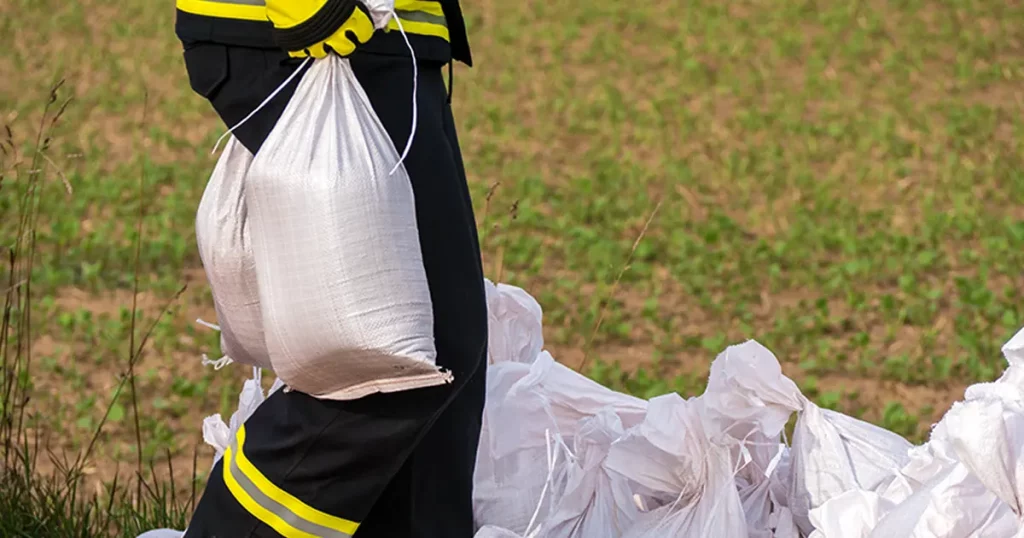
On average, a regular sandbag (the kind used in the event of a flood) weighs around 40lbs (18kg).
To work out how much sandbags weigh, you’ll have to take a look at the capacity, then multiply (or divide) the following numbers, depending on whether the sand you will be using is wet or dry. You can use this guide:
Weight of Dry Sand
Per Cubic Foot: 101.8lbs (46.17kg)
Weight Per Yard: 2700lbs (1224.69kg)
Per Gallon: 13.5lbs (6.12kg)
Weight of Wet Sand
Per Cubic Foot: 115lbs (52.16kg)
Weight Per Yard: 3240lbs (1469.63kg)
Per Gallon: 16lbs (7.25kg)
A sandbag bought for personal use is likely to be measured in gallons. The manufacturer may also supply the approximate weight when filled.
What Are Sandbags Used For?
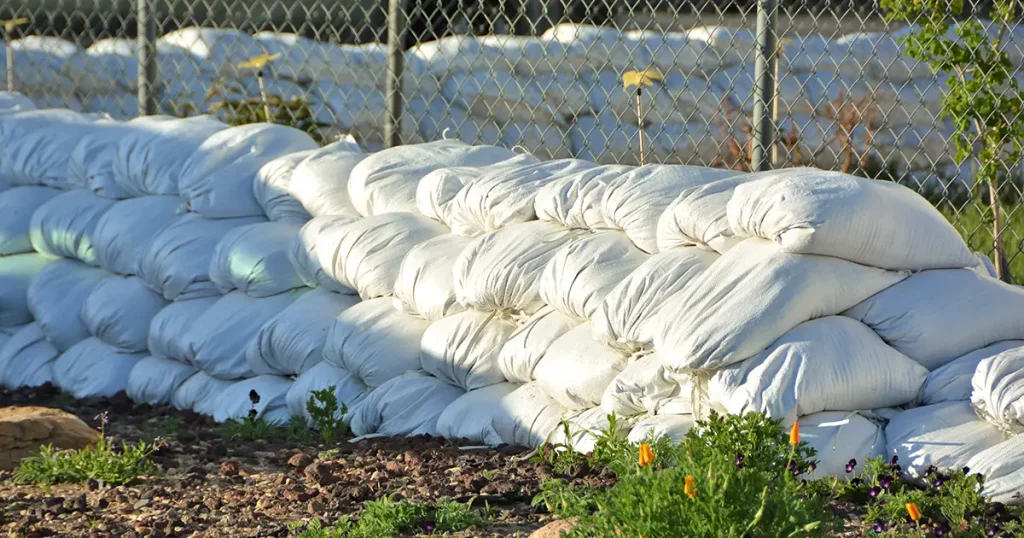
Sandbags are used to either prevent flooding, exercise or weigh something down. They are useful for weighing down objects, especially in windy conditions. You can use them to stabilize canopy tents, tailgate tents, parasols, trampolines, and even camera stands.
Sandbags for flooding tend to come in multipacks, so you can create a barrier around a doorway.
Exercise sandbags are designed to provide an alternative workout to lifting weights. They are large sandbags, usually with two handles, which you can use to improve your fitness.
What to Look for in Sandbags
Here’s a quick guide on what to look for in a good set of sandbags:
Materials
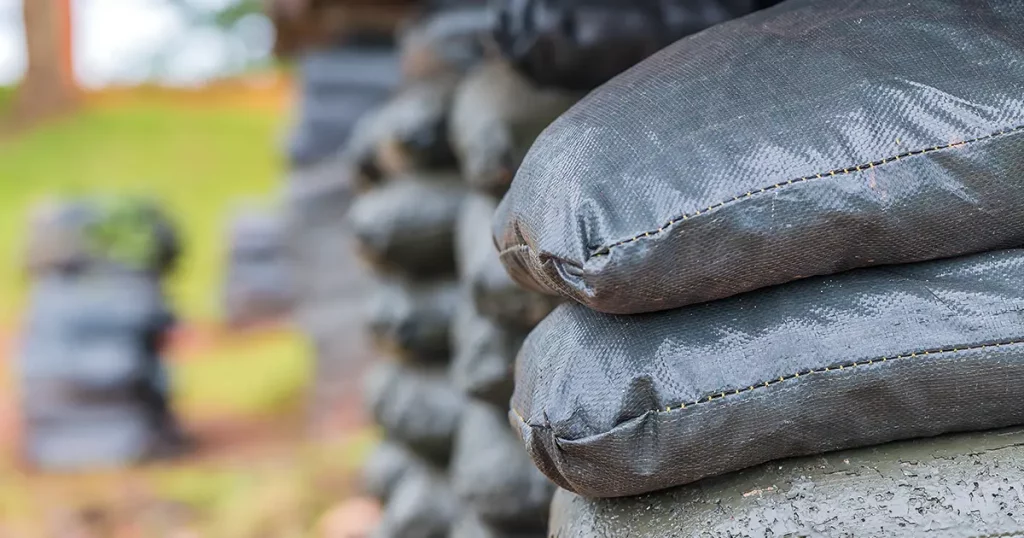
Most sandbags are made from polyester and may be coated with PVC to improve their durability and to make them more waterproof.
Some sandbags have extra UV protection. This will prevent the sandbags from fading or becoming damaged, even in direct sunlight. This is important if you want to use your sandbags as a beach shelter or similar, as they may be out in direct sunlight for hours at a time.
You can get sandbags in different colors. You may want to go for a bright color to prevent people from tripping over them.
Fastening

Sandbags will attach to your chosen object using either velcro or fabric ties (or sometimes both for extra security). This should be enough to keep them firmly attached.
You may also find sandbags with carabiners (heavy metal clips) included, allowing you to securely clip your sandbags to the object you want to weigh down. This is good for windy conditions if you want some extra reassurance.
Number of Sandbags
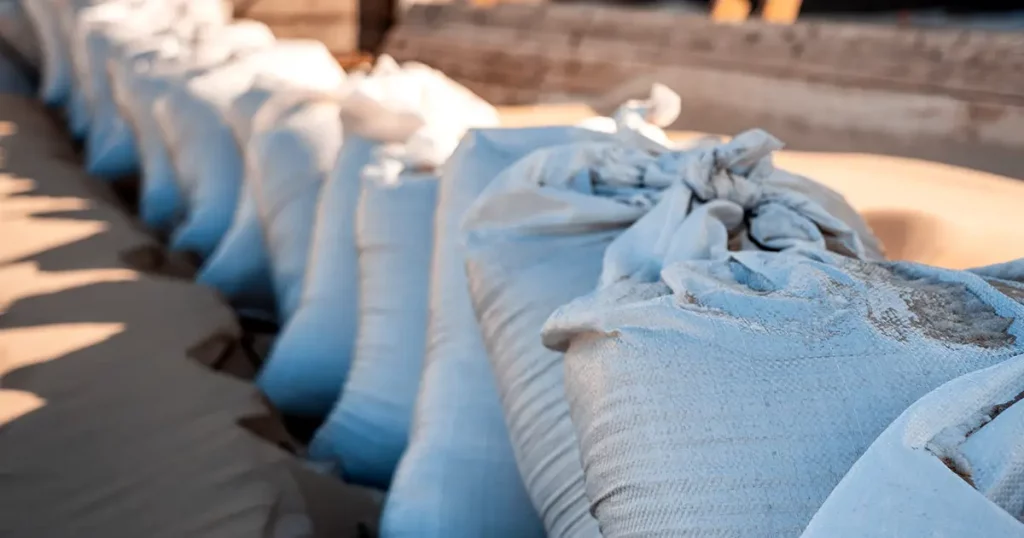
Most sandbags come in a multi-pack, most commonly in packs of 4 (except for flooding sandbags, which usually come in packs of 10 or more). Make sure you have enough sandbags for each ‘leg’ of the tent, gazebo, or trampoline you are trying to weigh down. You can always buy more than 1 pack if you want to make sure your structure will remain standing on a stormy day.
Capacity
The manufacturer may provide the capacity in the product description. This is usually measured in pounds. You can also fill your sandbag with dirt or rocks, depending on what is available.
Sandbag Recommendations
Here are a few sandbags we would recommend:
Sandbags for Weighing Down Items
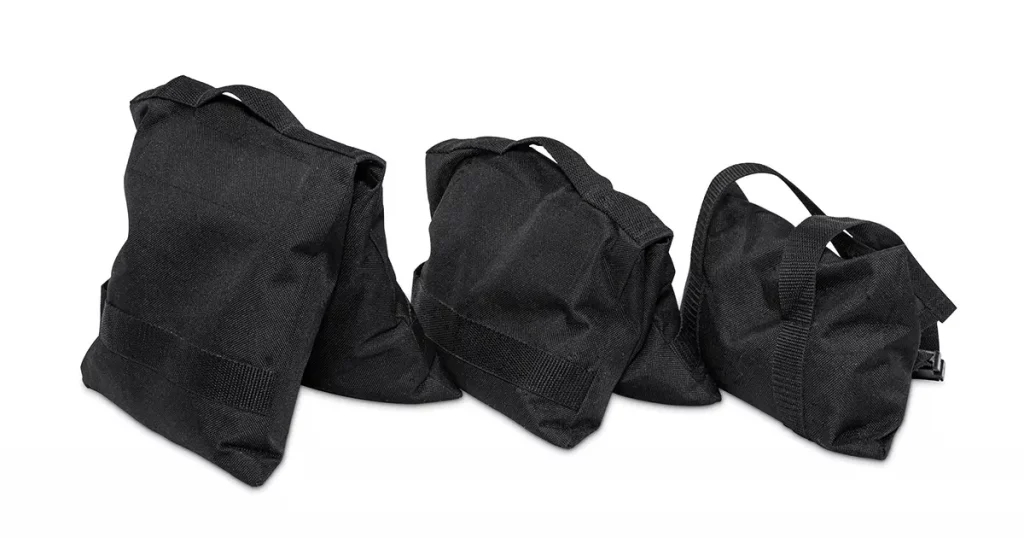
We’d recommend going for something like the ABCCANOPY Canopy Weights, which can be used for canopy tents, gazebos, sun shelters, and sports umbrellas. They can hold up to 28lbs (12.70kg) of sand, rocks, or dirt. They attach to the structure of whatever you need to weigh down using velcro and ribbon ties.
For smaller items, you could look at the Emart Heavy Duty Sandbags, which fold in half, allowing you to place the sandbags over the legs of whatever you’re weighing down. You can then attach them with carabiners (strong metal clips), which are included.
Using Sandbags for Flooding
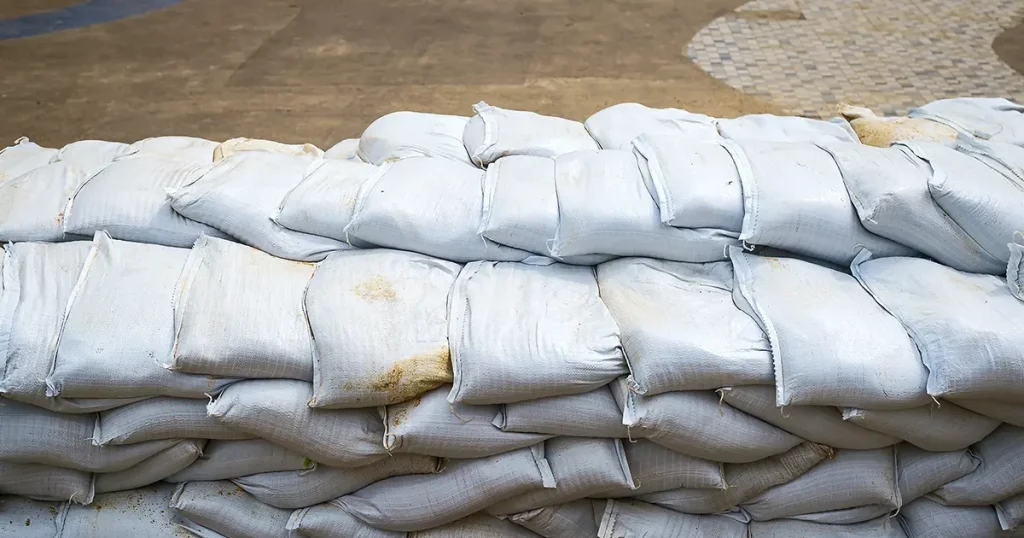
If you need sandbags for flooding, you can use something like these Military Grade Empty Sandbags, which come in packs of 10, 20, or 100. They’re hard-wearing and have UV protection, which means they won’t become damaged or frayed under harsh sunlight.
Sandbags for Exercising

For exercise, we’d recommend the Garage Fit Sandbag. Available in a variety of colors, it is a tough, durable sandbag with two sturdy handles for lifting.
Frequently Asked Questions
Before you go, here are some commonly asked questions:
How can I safely lift a full sandbag?
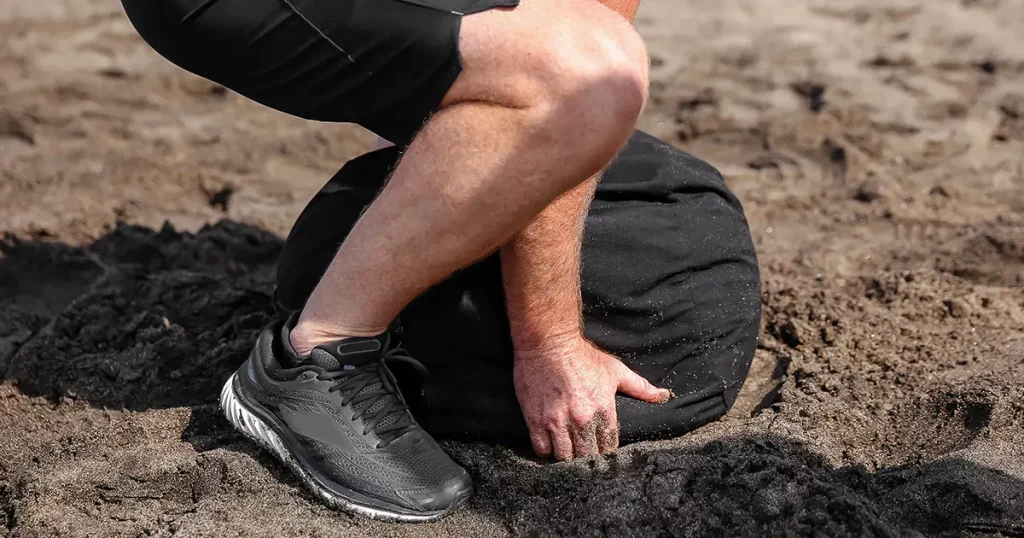
The main thing to remember is to lift from your knees. This means getting as close to the sandbag as you can, bending your knees, and keeping your back straight as you stand up with the sandbag in your hands. You can check out this guide on lifting and material handling for some general information on safely lifting heavy objects.
Is it better to use wet or dry sand?
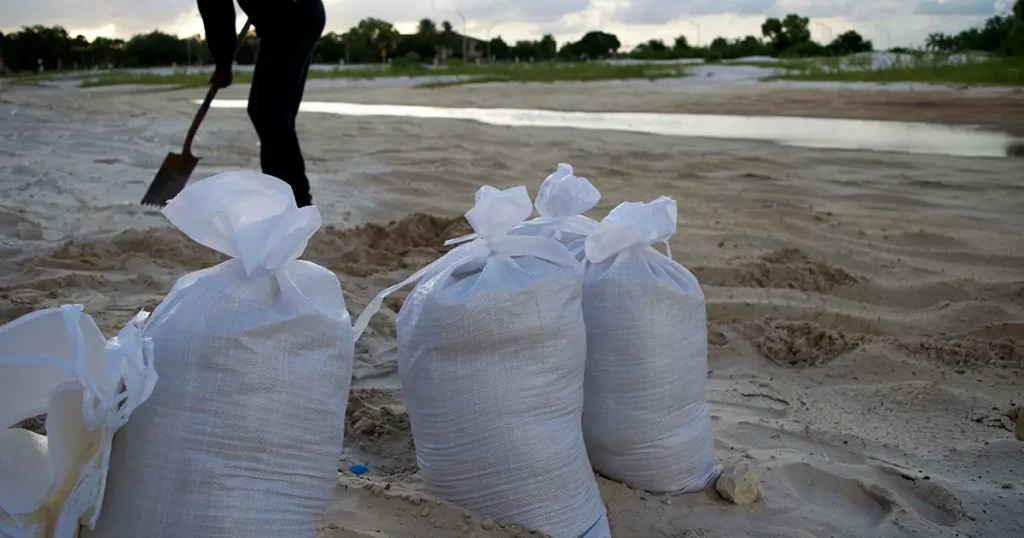
You can use either. You can check the instructions with your sandbag for more advice. We’d recommend filling your sandbags with whatever material is closest to you to prevent you from having to lift them too much.
How much wind can a canopy tent take if I weigh it down with sandbags?
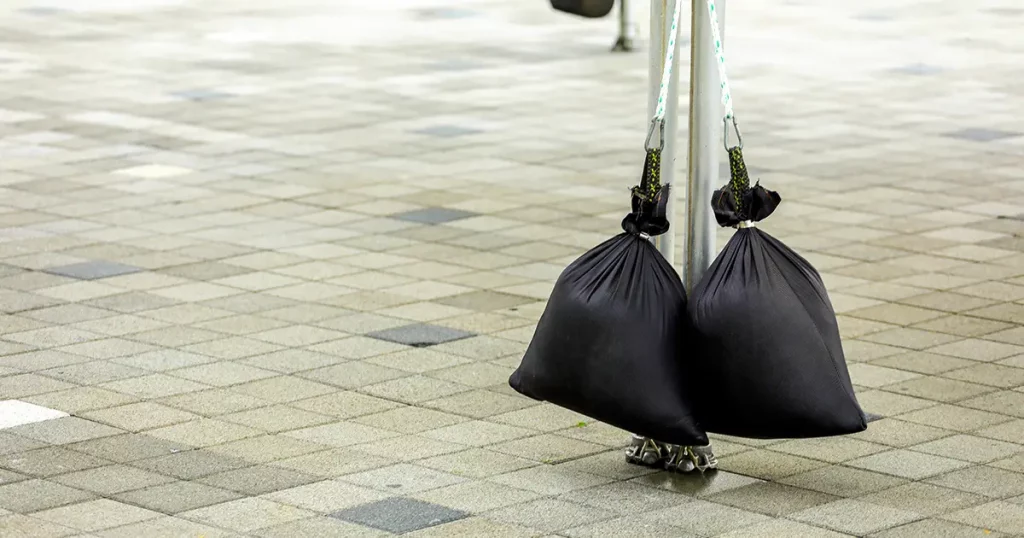
As a rough guideline, canopy tents can take between 18-30mph (between 29 and 48kmph) of wind using weights. You can find out more in our guide on How Much Wind Can a Pop-Up Canopy Take?
How can I use exercise sandbags?

Exercise sandbags can be used to create a whole-body workout. They are particularly good for increasing core strength, providing a great anaerobic workout for your body. You can read more in this Guide to Sandbag Exercises by Men’s Health.
Our Final Thoughts

We hope this has helped you to figure out how much sandbags weigh. While it depends on the size of your sandbag, you can use the approximate weight of wet or dry sand to figure it out.
